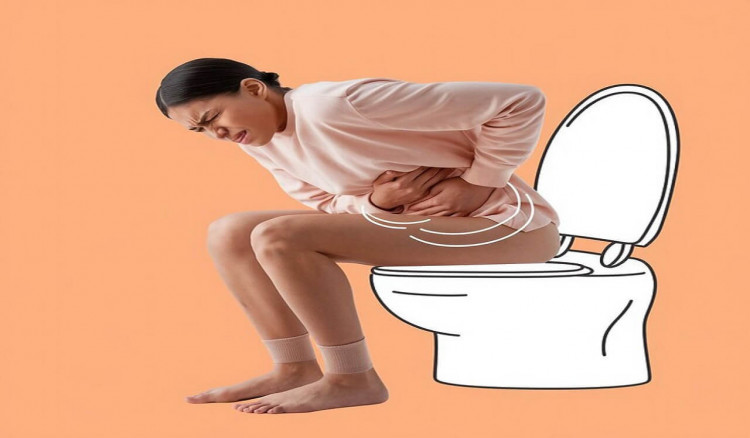
Cholera: Symptoms, Prevention & Treatment
WHAT IS CHOLERA
Cholera is an acute diarrhoeal infection caused by eating or drinking food or water that is contaminated with the bacterium (Vibrio cholerae).
There are more than 60 serogroups of Vibrio cholerae, but only serogroup O1 causes cholera. Vibrio cholera occurs as two biotypes—classical and El Tor
Cholera can affect both children and adults.
HOW IS CHOLERA TRANSMITTED
The bacteria (Vibrio cholerae) is found in the faeces (poop) of a sick person. The bacteria spread when a person drinks water or eat food contaminated with the bacteria.
Some common ways the cholera bacteria spreads are:
- Drinking water that has been contaminated at its source (e.g. faecally contaminated surface water entering an incompletely sealed well) or during storage (e.g. by contact with hands soiled by faeces) and ice made from contaminated water
- Food contaminated during or after preparation e.g. milk, cooked rice, lentils, potatoes, beans, eggs and chicken. Seafood, particularly shellfish taken from contaminated water and eaten raw or insufficiently cooked
- Fruits and vegetables grown at or near ground level and fertilized with night-soil, irrigated with water containing human waste or freshened with contaminated water, and then eaten raw
SYMPTOMS OF CHOLERA
Most people infected with cholera do not develop symptoms and can still spread the bacteria in their faeces for up to 10 days after being infected.
The chief symptoms of cholera are sudden onset of severe vomiting and copious diarrhea, sometimes referred to as ricewater stools. The resulting dehydration (loss of water from the body) is often fatal.
Approximately 1 in 10 people will be experience severe symptoms, why can cause severe dehydration.
Common signs and symptoms of cholera include:
• Acute diarrhea, described as “rice water” stool.
• Severe dehydration
• Rapid heart rate
• Loss of skin elasticity
• Dry mucous membranes
• Low blood pressure
• Vomiting
• Thirst
• Leg cramps
• Weakness
People who have symptoms often start feeling unwell 12 hours and 5 days after ingesting contaminated food or water. Cholera can make a healthy person weak quickly and can cause death within 24 hours.
CHOLERA TREATMENT
Oral rehydration salts (ORS) can successfully treat 80% of patients. ORS is a solution prepared by mixing 1 sachet of ORS in 1 liter of clean and safe water.
If you don’t have ORS sachets, you can make the same solution by mixing:
- Half a teaspoon of salt
- Six teaspoons of sugar
- One liter of clean and safe drinking-water or lightly salted rice water
Cholera Antibiotics
In severe cases of cholera, antibiotics can reduce the volume and duration of diarrhea and shorten the period during which cholera vibrois are excreted. They can be given orally as soon as vomiting stops, usually within 3 to 4 hours after starting rehydration.
The patient who benefits most from antibiotics are those who are severely dehydrated. Indiscriminate use of antibiotics in mild cases can quickly use up supplies and hasten the development of antibiotic resistance among cholera vibrios.
For adult cholera patient, doxycycline, a long-acting form of tetracycline, is the preferred antibiotic because only a single dose is needed. For children, pediatric tablets or liquid preparations of trimethoprim-sulfamethoxazole (TMP-SMX) are recommended. Tetracycline is also effective in children.
The choice of antibiotic should take into account local patterns of resistance to antibiotics.
The vaccine that has been developed against cholera is effective for only a few months and requires frequent Booster Shots.
CHOLERA OUTBREAK
Cholera is a danger in communities that lack modern sanitary techniques, such as frequent testing and purification of water supplies and proper disposal of human excrement. There have been several cholera outbreaks recorded in part of Nigeria which the government has taken action to eradicate.
PREVENTING CHOLERA
The following steps can be taken to prevent cholera outbreaks
Ensuring a safe water supply
Access to safe water is a basic requirement for health, made more critical when cholera threatens. Since contaminated water is the usual source of cholera infection, all efforts must be made to provide safe drinking water, as well as safe water for food preparation and bathing.
The supply of water must be of good quality, affordable, available to all—continuously and in sufficient quality for all domestic purposes. Some methods of making water safe are chlorination and boiling
Sanitation
Good sanitation can markedly reduce the risk of transmission of intestinal pathogens, including cholera vibrios; this is especially true where the lack of good sanitation may lead to contamination of clean water sources.
High priority should be given to observing the basic principles of sanitary human waste disposal, as well as to ensuring the availability of safe water supplies. Houseflies play a relatively small role in spreading cholera and their presence in large numbers indicate poor sanitary conditions that favour cholera transmission
Food Safety
Food is an important vehicle for diseases organisms and you must establish adequate controls for the handling and processing of food.
Where there is a threat of cholera, you should stress the following:
Avoiding raw food (exception: undamaged fruits and vegetables from which the peel can be removed are safe if hygienically handled)
Cooking food until it is hot throughout
Eating food while it is still hot, or reheating it thoroughly before eating
Washing and thoroughly drying all cooking and serving utensils after use
Handling and preparing food in a way that reduces the risk of contamination (e.g. cooked food and eating utensils should be kept separate from uncooked foods and potentially contaminated utensils)
Washing hands thoroughly with soap after defecating, or after contact with faecal matter, and before preparing or eating food, or feeding children
Sources and References
WHO Guidance on Cholera
WHO Guidelines for Cholera Control






Share This Article: